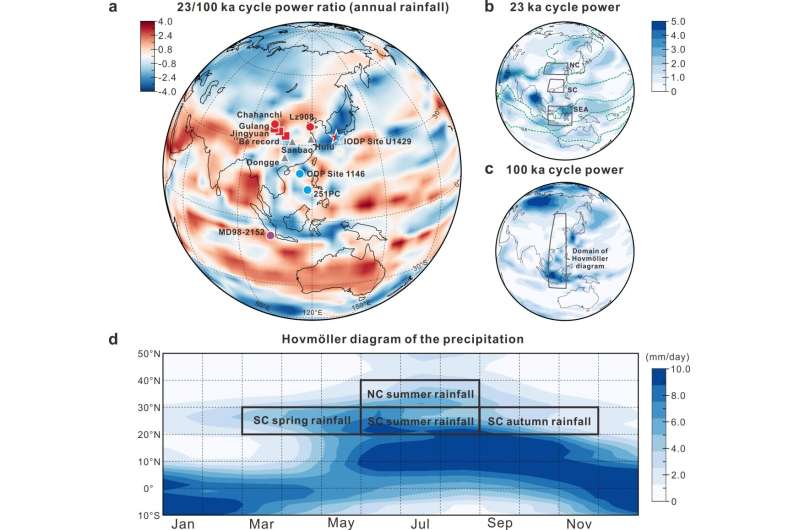This article has been reviewed according to Science X's editorial process and policies. Editors have highlighted the following attributes while ensuring the content's credibility:
fact-checked
peer-reviewed publication
trusted source
proofread
Marine sediment tells story of East Asian rainfall over the past 400,000 years

Researchers led by Prof. Wan Shiming from the Institute of Oceanology of the Chinese Academy of Sciences (IOCAS) and their collaborators reconstructed the 400,000-year East Asian rainfall record from marine sediment.
The study was published in Communications Earth & Environment on Jan. 4.
Based on the International Ocean Discovery Program (IODP) Site U1429 sediments in the northern Okinawa Trough and the fact that the sediments were mainly supplied from the Yellow River, the researchers established the weathering-temperature-rainfall model by the silicate weathering index of the sediments in Yellow River basin.
Then they used the model to reconstruct the rainfall evolution in northern China over the past 400,000 years. Consistent with the simulations, the rainfall record showed a strong 20,000-year cycle.
"Changes of rainfall in southern China and west Southeast Asia was dominated by a 100,000-year cycle," said Prof. Wan.
Further research showed that rainfall in northern China mainly occurred in summer, so it was closely related to the change of summer insolation. However, in addition to summer rainfall, spring and autumn rainfall also accounted for a large proportion in southern China. During glacial periods, water vapor convergence in spring and autumn in southern China was enhanced, which made the local annual rainfall exhibit the signal of ice sheet.
On the other hand, rainfall in western Southeast Asia was mainly affected by sea level changes related to ice volume changes, so it also showed a strong glacial-interglacial cycle.
"Our results support the theory of precession forcing on East Asian monsoon rainfall evolution, and also highlight the seasonal contributions to orbital-scale of rainfall changes," said Zhao Debo, first author of the study.
"The large proportions of spring and autumn rainfall in southern China indicate that rainfall proxies previously established in this region cannot be simply interpreted as summer rainfall indexes," said Prof. Wan.
More information: Debo Zhao et al, Quaternary rainfall variability is governed by insolation in northern China and ice-sheet forcing in the South, Communications Earth & Environment (2023). DOI: 10.1038/s43247-022-00670-9
Journal information: Communications Earth & Environment
Provided by Chinese Academy of Sciences




















